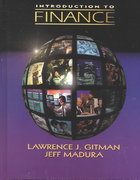
Question Help o PMF, Inc., can deduct interest expenses next year up to 30% of EBIT. This limit is equally likely to be $2 million, 511 million or S20 million. Its corporate tax rate is 35% and investors pay a 25% tax rate an income from equity and a 35% tax rate on interest income a. What is the effective tax advantage of debt if PMF has interest expenses of $2 million this coming year? b. What is the effective tax advantage of debt for interest expenses in excess of $20 million? Ignore carryforwards). c. What is the expected effective tax advantage of debt for interest expenses between $2 million and $11 million? (Ignore carryforwards) d. What level of Interest expense provides PMF with the greatest tax benefit? a. What is the effective tax advantage of debt if PMF has interest expenses of $2 millon this coming year? If PMF has interest expenses of $2 million this coming year, the effective tax advantage is % (Round to one decimal place) b. What is the effective tax advantage of debt for interest expenses in excess of $20 million? (Ignore carryforwards). For interest expenses in excess of $20 million, the effective tax advantage is % (Round to one decimal place.) c. What is the expected effective tax advantage of debt for interest expenses between $2 million and $11 million? (Ignore carryforwards) The expected effective tax advantage of debt for interest expenses between 52 million and 511 million is % (Round to one decimal place.) d. What level of Interest expense provides PMF with the greatest tax benefit? (Select the best choice below.) O A. The interest expense does not matter because the tax benefit is always the same. OB. 52 million OC. $20 million and over OD. Between $2 million and $11 million O E. Up to 52 million Question Help o PMF, Inc., can deduct interest expenses next year up to 30% of EBIT. This limit is equally likely to be $2 million, 511 million or S20 million. Its corporate tax rate is 35% and investors pay a 25% tax rate an income from equity and a 35% tax rate on interest income a. What is the effective tax advantage of debt if PMF has interest expenses of $2 million this coming year? b. What is the effective tax advantage of debt for interest expenses in excess of $20 million? Ignore carryforwards). c. What is the expected effective tax advantage of debt for interest expenses between $2 million and $11 million? (Ignore carryforwards) d. What level of Interest expense provides PMF with the greatest tax benefit? a. What is the effective tax advantage of debt if PMF has interest expenses of $2 millon this coming year? If PMF has interest expenses of $2 million this coming year, the effective tax advantage is % (Round to one decimal place) b. What is the effective tax advantage of debt for interest expenses in excess of $20 million? (Ignore carryforwards). For interest expenses in excess of $20 million, the effective tax advantage is % (Round to one decimal place.) c. What is the expected effective tax advantage of debt for interest expenses between $2 million and $11 million? (Ignore carryforwards) The expected effective tax advantage of debt for interest expenses between 52 million and 511 million is % (Round to one decimal place.) d. What level of Interest expense provides PMF with the greatest tax benefit? (Select the best choice below.) O A. The interest expense does not matter because the tax benefit is always the same. OB. 52 million OC. $20 million and over OD. Between $2 million and $11 million O E. Up to 52 million







